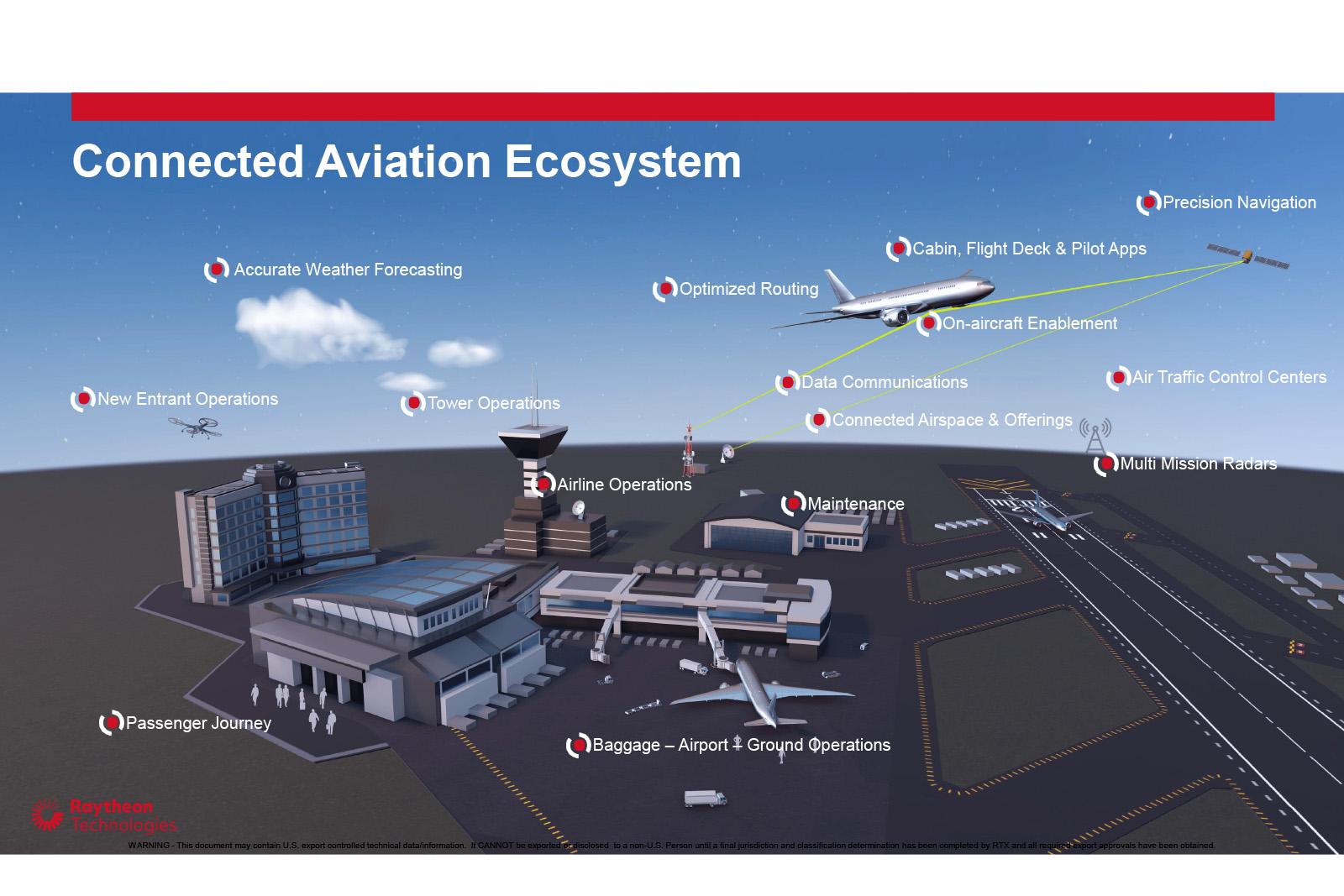
FARNBOROUGH—Raytheon companies are further taking advantage of their merged capabilities by connecting different parts of the aviation ecosystem—from airport operations to air traffic control and inflight operations and maintenance.
For instance, Collins Aerospace and Pratt & Whitney announced signing a full-flight data agreement that should enhance the engine manufacturer’s predictive maintenance capabilities by having access to more data through Collins’ GlobalConnect network and communication solution.
GlobalConnect is designed to securely transmit data, both on and off aircraft, to enable “sharing things like aircraft maintenance performance between the aircraft, the airline and ground operations. We're excited to be working closely with the Pratt team on enhanced engine health monitoring” says Jennifer Schopfer, president of Collins Aerospace’s Connected Aviation Solutions.
Pratt & Whitney already provides predictive maintenance services for more than 10,000 engines—looking at parameters such as vibration, exhaust gas temperatures and pressures across different engine modules—to predict what changes mean to avoid unscheduled maintenance. Dave Emmerling, Pratt & Whitney commercial engines vice president, says Pratt’s predictive maintenance service today saves operators about $100,000 per aircraft per year.
By having full-flight data, Pratt will receive data continuously from engine operations instead of snapshots throughout the flight envelope, as well as different types of data.
“That (additional) data is a gold mine of potential value,” that provides a “step change to the insights,” Emmerling says. “It's really going to allow us to take those analytics to the next level and get much more powerful, predictive maintenance solutions for our customers.”
Another example of connecting different points comes from Collins’ acquisition of FlightAware, known for flight tracking data, last year.
Collins is using the FlightAware data in various ways, including for “highly predictive, highly accurate gate arrival times,” Schopfer says. By pairing this with flight route optimization, airlines and airports should be able to connect optimal landing and gate arrival times.
